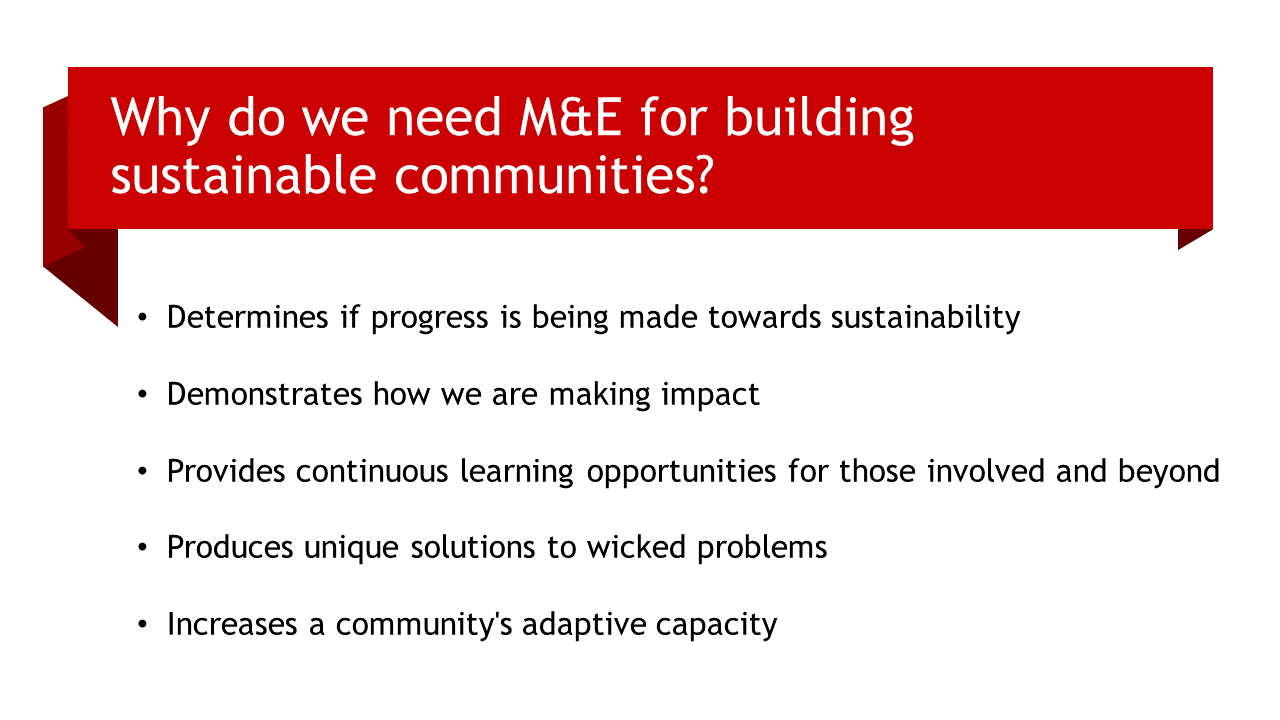Why do we Need M&E for Building Sustainable Communities?

Consideration towards M&E for building sustainable communities is important for several reasons:
- At the basic level, M&E can not only provide detailed information about the efficiency and success of project, it also works to provide public and internal accountability and help demonstrate impact, which are essential functions in light of current sustainability challenges (Estrella & Gaventa, 1998; Goparaju et al., 2006; Stem et al., 2005).
- This cyclical process involving problem identification, taking action, monitoring, and reflecting and redefining the problem, inherently affords the opportunity to strengthen and deepen the contributions of primary stakeholders and rights holders, through shared learning, joint-decision making, co-ownership, etc. (Onyango, 2018).
- Additionally, in order to achieve sustainability under conditions of socio-ecological change, continuous learning in environmental management initiatives are crucial (Armitage et al., 2008). In line with this, greater public participation and learning about the interactions between science and society has become increasingly important (Kates, 2011). Berkes et al. (2003) argue that environmental management processes can be improved by making them adaptable and flexible, so as to be able to deal with the uncertainty that complex systems inherently produce.

